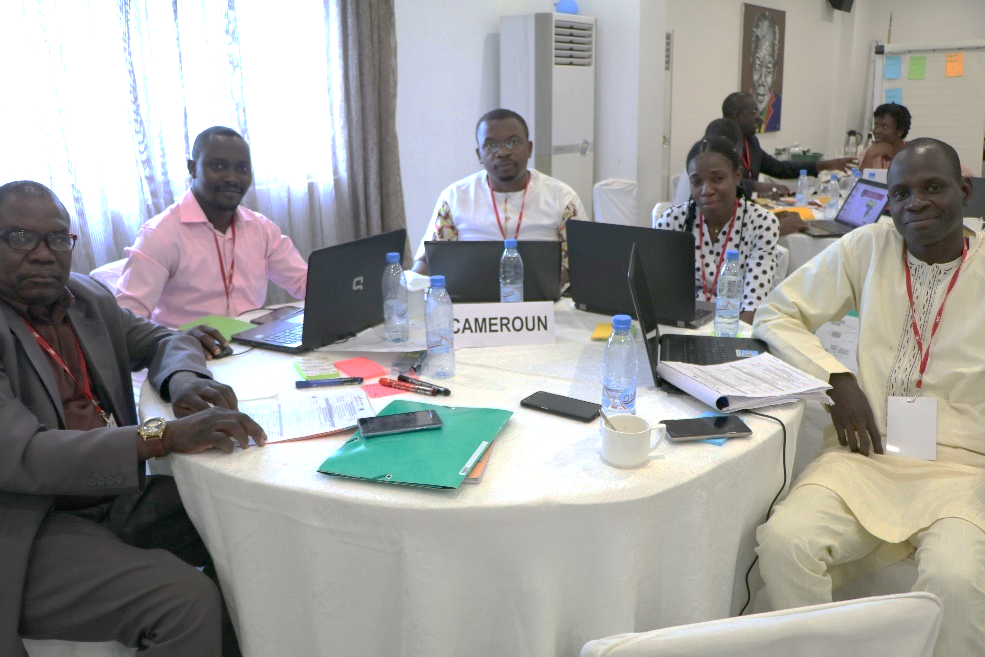
The OIE has just completed the first sub-regional workshops on protocols of viral haemorrhagic fevers (VHF) surveillance in wildlife. This workshop was held at the Michael Hotel in Brazzaville (Congo, Rep.) from 9 to 13 December 2019, and was targeting Delegates and National Focal Points for Animal Disease Notification, Wildlife, Veterinary Laboratories and Communication. Representatives of five Central African countries, Cameroon, Central African Republic, Democratic Republic of Congo, Gabon and Congo (Rep.) took part in the event.
In addition to the OIE regional staff (Bamako) and the headquarters (Programme Department, Paris), some staff from CIRAD, WCS Congo and Gorilla Doctors DRC, facilitated this workshop. FAO (Congo Country Office) was also present as an observer during the workshop.
The opening ceremony was chaired by Mr. Georges Nganongo, Director of Cabinet of the Ministry of Agriculture, Fisheries and Livestock of Congo (Rep), representing the Minister of State. His opening statement was preceded by the speeches of Dr. Brice Lafia (OIE) and Ms. Suze Percy Filippini (FAO Congo).
The workshop was based on an interactive and participatory methodology, including exchanges of experience through presentations by WCS Congo and Gorilla Doctors DRC, case studies and using user-friendly facilitation tools. The workshop was divided into eleven sequences structured in a step-by-step process to enable each country to develop (i) a draft of a surveillance protocol on VHF, integrating wildlife and (ii) a roadmap including the timeframe, training needs, human, material and financial resources for optimal monitoring of VHF in wildlife (iii) a short brief to convince national decision-makers, donors and technicians from other sectors of the added value of their protocol.
Dr Monique Eloit, OIE Director General OIE Scientific and Technical Review, 2014, 33 (2)
The five days of workshop allowed participants to learn more on the following viral haemorrhagic fevers: Rift Valley Fever (RVF), Crimean Congo Haemorrhagic Fever (CCHF), Lassa Fever and Ebola/Marburg Disease. And more specifically: (i) their epidemiology and transmission cycle (species affected, modes of transmission), (ii) the role of wildlife in the epidemiology of the virus, (iii) the recognition of warning signs of an epidemic, (iv) the means of monitoring these diseases, and (v) the surveillance method best suited to the context of your country. Participants had also the opportunity to explore collaborative mechanisms integrating wildlife in epidemiological surveillance before participating in the co-construction of a surveillance protocol integrating wildlife.
All pictures (c) B. Lafia (oie) 2019, unless mentioned otherwise.
Group photo. Picture © F. Mabik (FAO Congo) 2019



